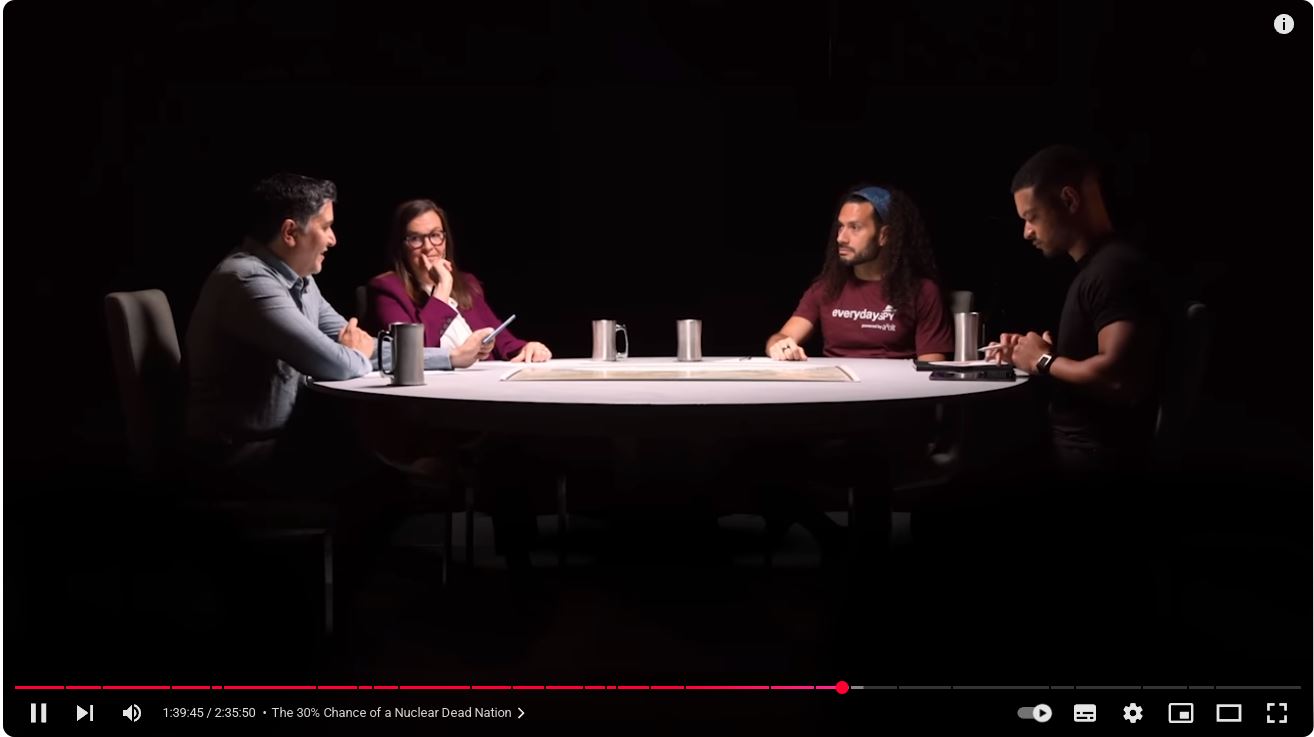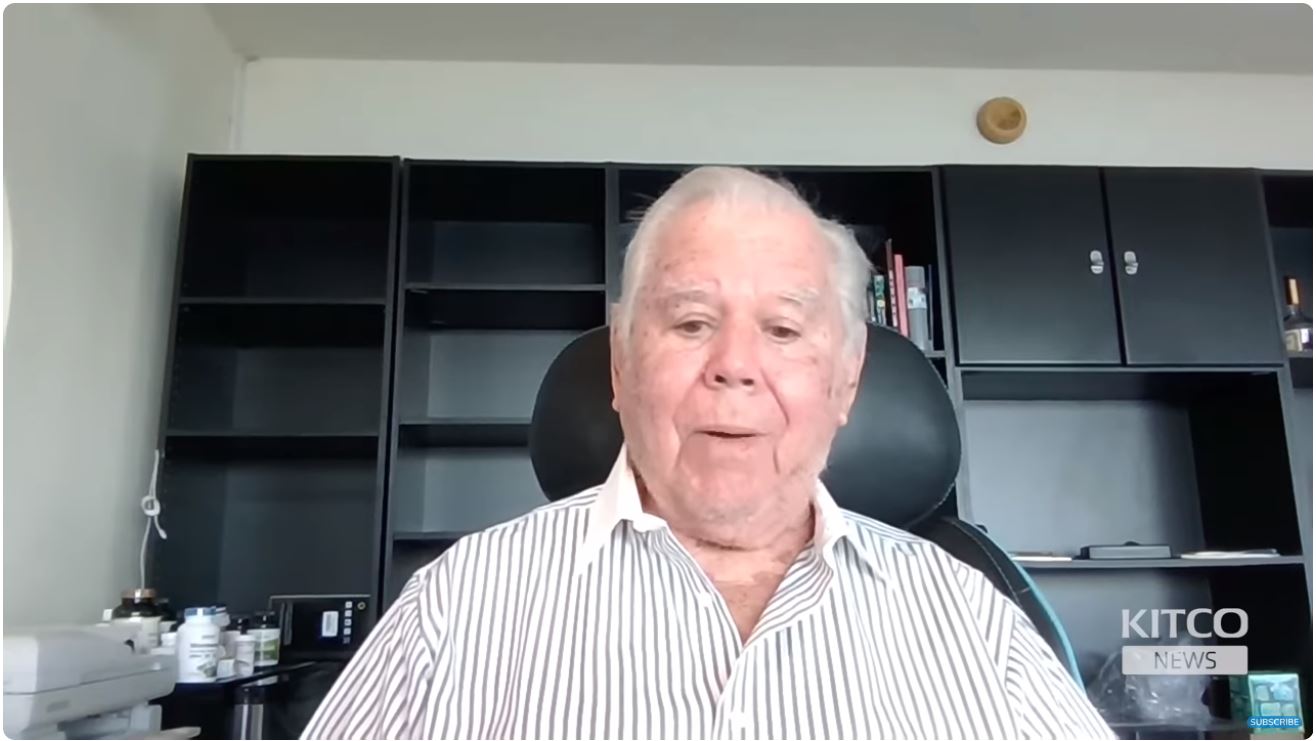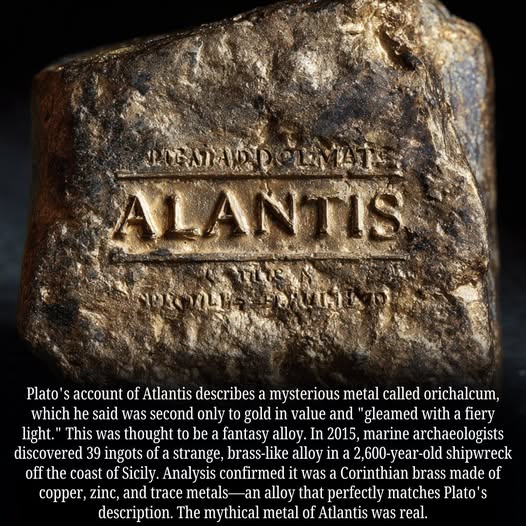
Click to view the video: https://nexusnewsfeed.com/article/science-futures/dr-roman-yampolskiy-these-are-the-only-5-jobs-that-will-remain-in-2030/

Tom's Blog on Life and Livingness

This Diary Of A CEO roundtable brings together 3 top experts: Former CIA intelligence officer Andrew Bustamante, nuclear war journalist Annie Jacobsen, and global politics expert Benjamin Radd to discuss the biggest threats facing the world right now.
Click to view the video: https://www.youtube.com/watch?v=8qObdS-bhRM
“I was obliged to be industrious. Whoever is equally industrious will succeed equally well.”
Johann Sebastian Bach – Composer (1685 – 1750)

In a prison cell near Seattle, a man serving a 25-year sentence taught himself advanced mathematics and ended up publishing a groundbreaking paper from behind bars.
Christopher Havens, a high school dropout, found himself with a lot of time and a desire to change his life. He decided to dedicate himself to studying math.
He got his hands on some basic textbooks and started from the beginning. He quickly worked his way through algebra, calculus, and then into much more complex fields.
His self-study led him to a very old mathematical puzzle involving something called continued fractions. It was a problem that had stumped professional mathematicians for some time.
Working alone in his cell with just pen and paper, Havens managed to find a solution. He figured out a way to discover new patterns in a whole class of numbers.
He wrote a letter to a mathematics journal, hoping someone would look at his work. That letter eventually made its way to mathematics professors in Italy, who were stunned by what he had done.
After a rigorous review process, his work was confirmed to be correct and original. In January 2020, his paper was published in the journal *Research in Number Theory*, a major accomplishment for any mathematician, let alone one who is self-taught in prison.
Christopher Havens’ story is a powerful example of how a person can find purpose and achieve something remarkable, no matter their circumstances.
Sources: Popular Mechanics, Scientific American

A fundamentalist view on current share prices.
Click to view the video: https://www.youtube.com/watch?v=vd2YUMKPmGM

Click to view the video: https://x.com/thehealthb0t/status/1964586890843345158



My husband isn’t going to be happy I’m posting this. Tonight, we were at Walmart and as we were checking out, we overheard this young guy’s conversation with the cashier.
He said, ‘I worked all summer long. So, I told my mom she didn’t have to spend a dime on my school supplies this year.’ Next thing I know my husband is shaking this guy’s hand and paying for his school supplies.
Alan has always valued hard work and he encouraged this guy to continue doing what he was doing, and his future could go anywhere he wanted to take it. I didn’t want to post this just to brag on my husband. But also to brag on this young guy! In a world where we are so quick to ‘share’ the bad things going on, I thought this was just the kind of goodness I needed to see!

Hidden deep within Jordan’s rose-hued sandstone canyons, the ancient city of Petra stands as a breathtaking tribute to the Nabataeans a once-nomadic Arab people who, by the 4th century BCE, established one of the most advanced and thriving urban centers of the ancient world. Despite settling in an arid desert landscape, the Nabataeans transformed Petra into a flourishing hub of life, culture, and commerce. Their most astonishing achievement was their sophisticated water engineering: in a region with less than six inches of annual rainfall, they constructed an intricate system of dams, cisterns, and ceramic piping that collected, filtered, and stored rainwater. This innovation not only sustained a population of around 30,000 but also allowed for verdant gardens and agricultural productivity amidst the harsh desert.
The architectural legacy of Petra is equally remarkable. Its iconic structures, such as the Treasury (Al-Khazneh), are carved directly into massive sandstone cliffs, showcasing both artistic mastery and monumental ambition. These façades are only the surface of larger complexes that extend deep into the rock, some aligned precisely with celestial events like solstices and equinoxes evidence of the Nabataeans’ advanced astronomical knowledge. The city’s strategic layout, aesthetic precision, and spiritual symbolism highlight a culture that merged science, religion, and artistry in seamless harmony.
Petra’s success also stemmed from its strategic location along vital trade routes that connected Arabia, Egypt, and the Mediterranean. The Nabataeans capitalized on this by dominating the lucrative incense and spice trade. Rather than expanding through conquest, they secured their influence through diplomacy, paying tribute to empires like Rome while retaining sovereignty. Though Petra was eventually annexed by Rome in 106 CE, it remained prosperous until seismic shifts both literal and economic led to its decline. Forgotten by much of the world for centuries, Petra was rediscovered in 1812 by Swiss explorer Johann Ludwig Burckhardt, reviving global interest in the ingenious civilization that once made a desert bloom.